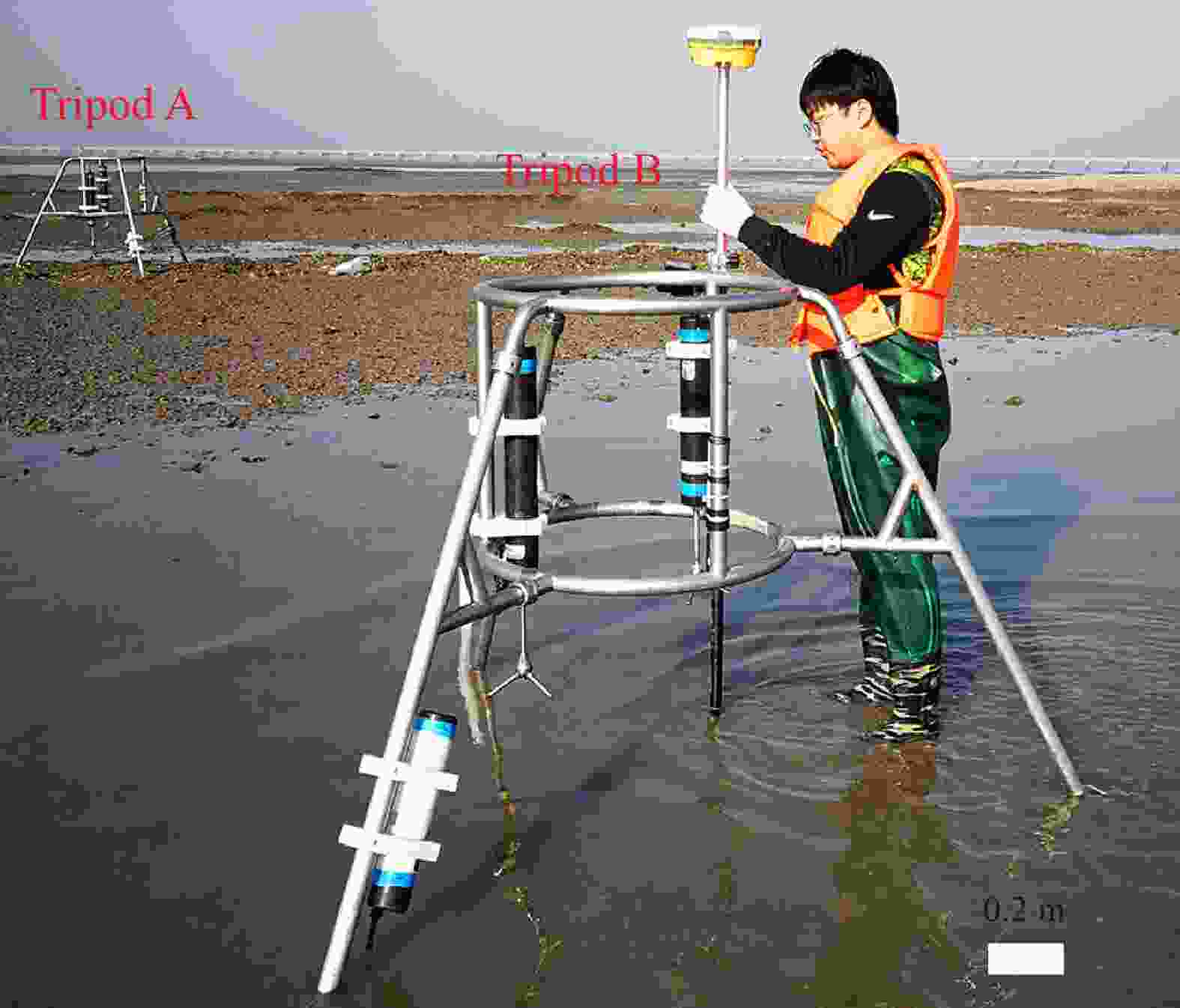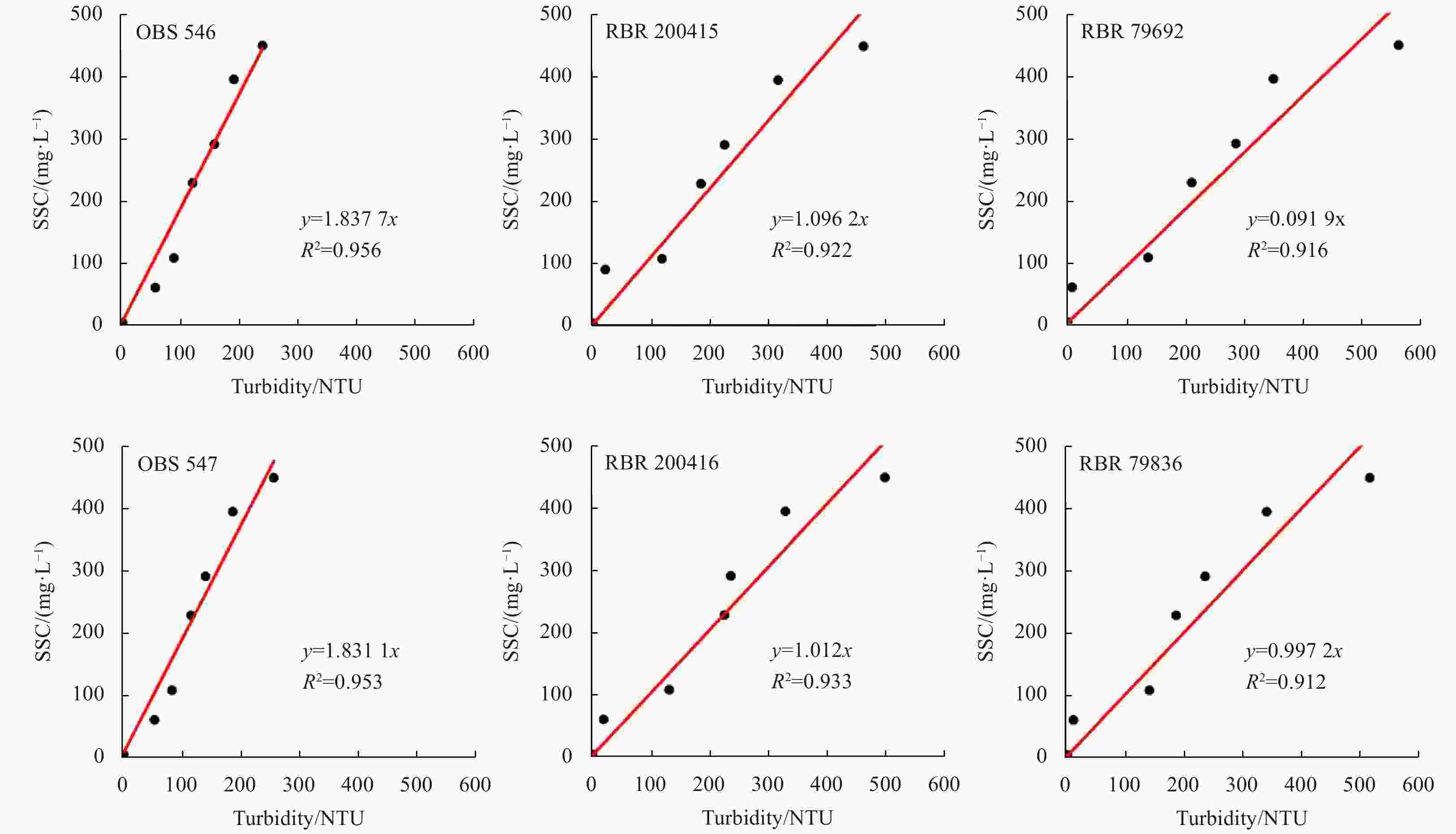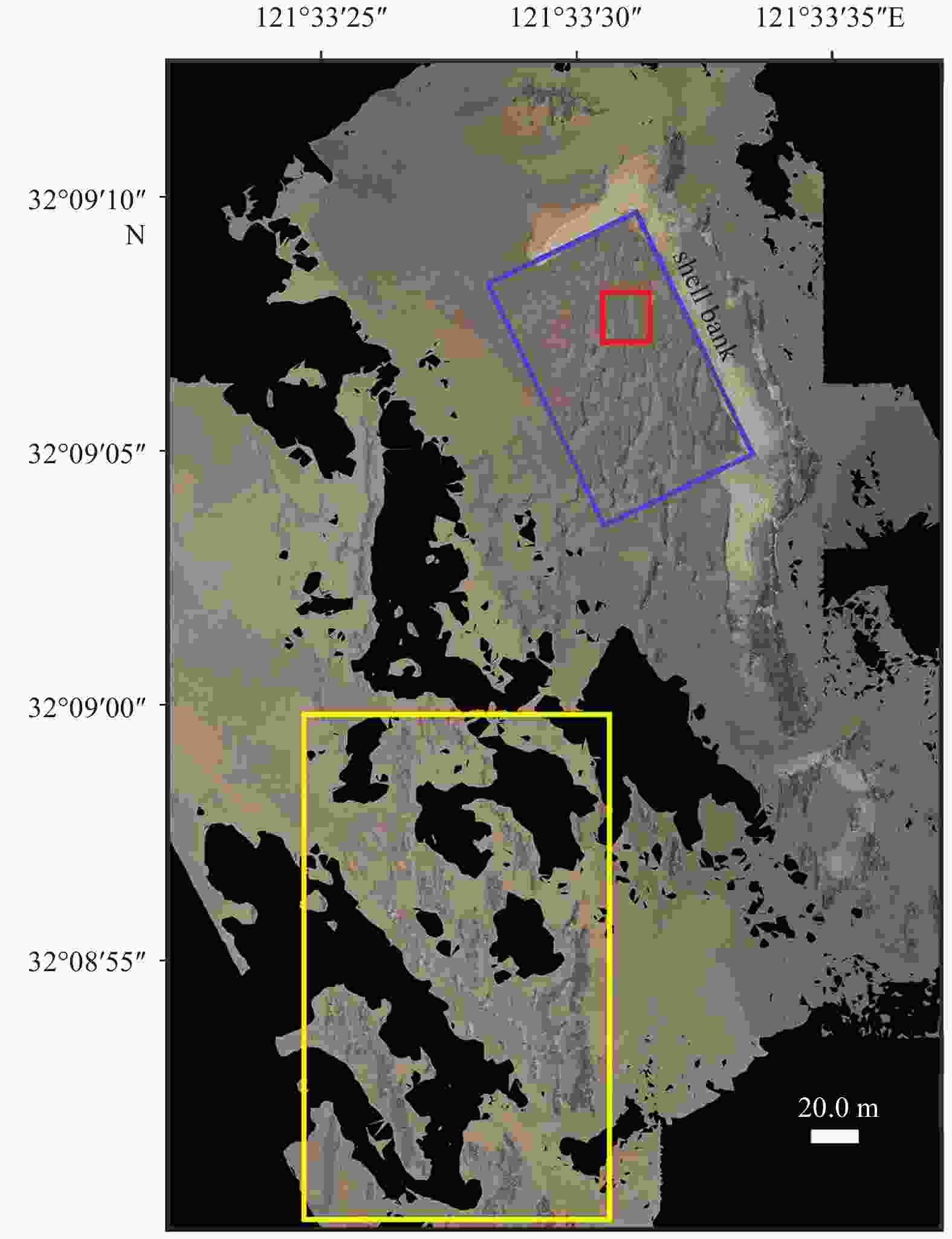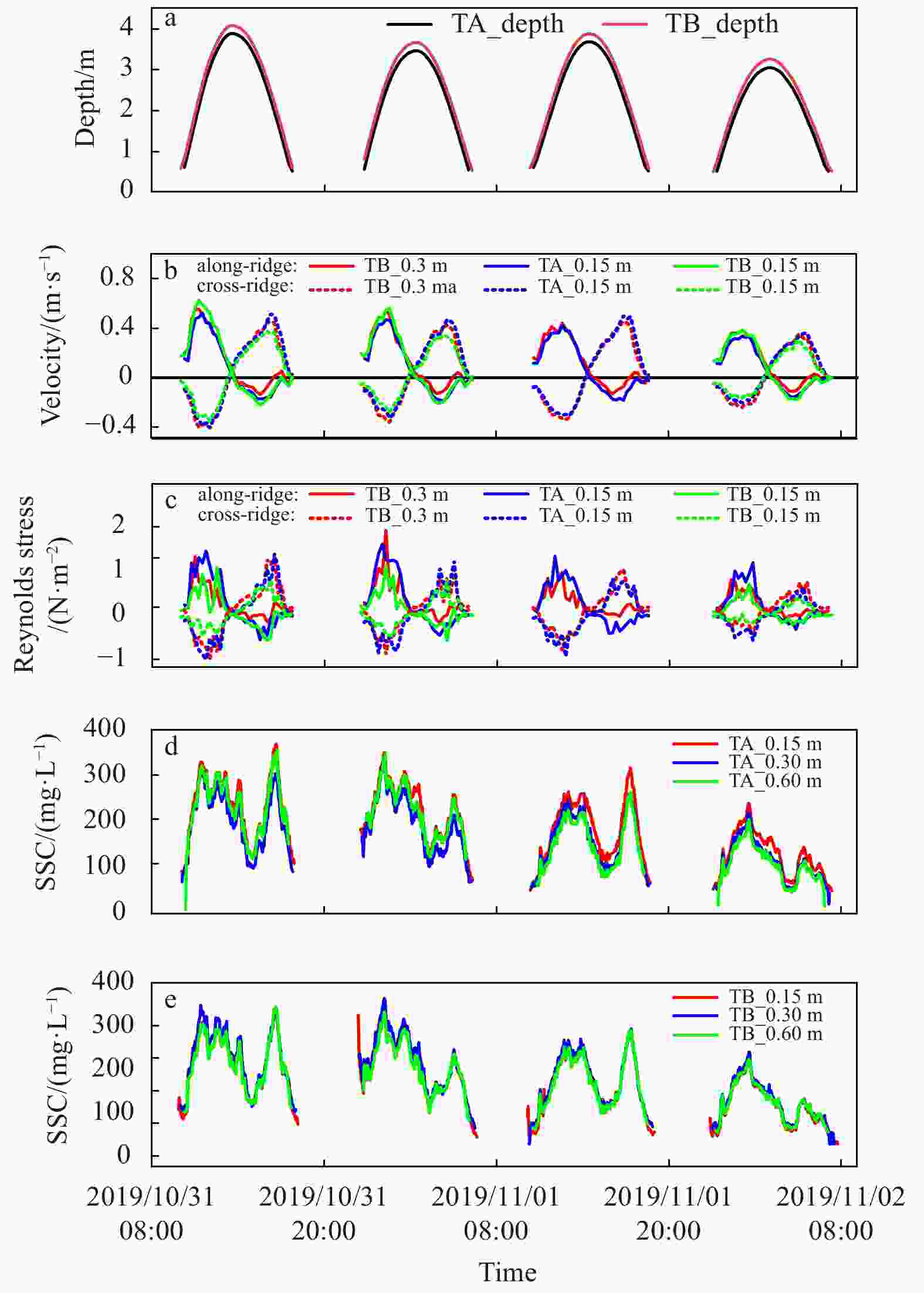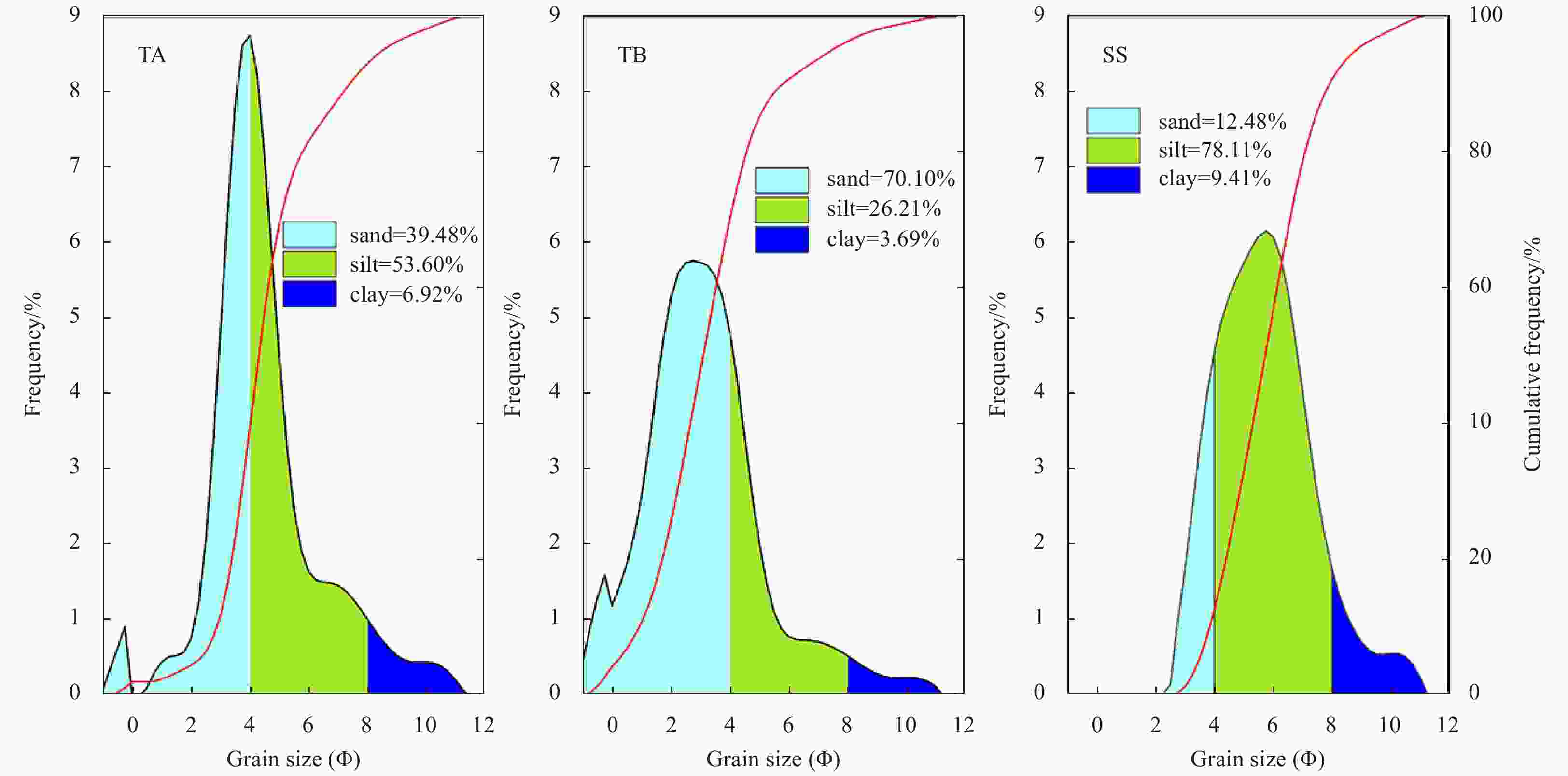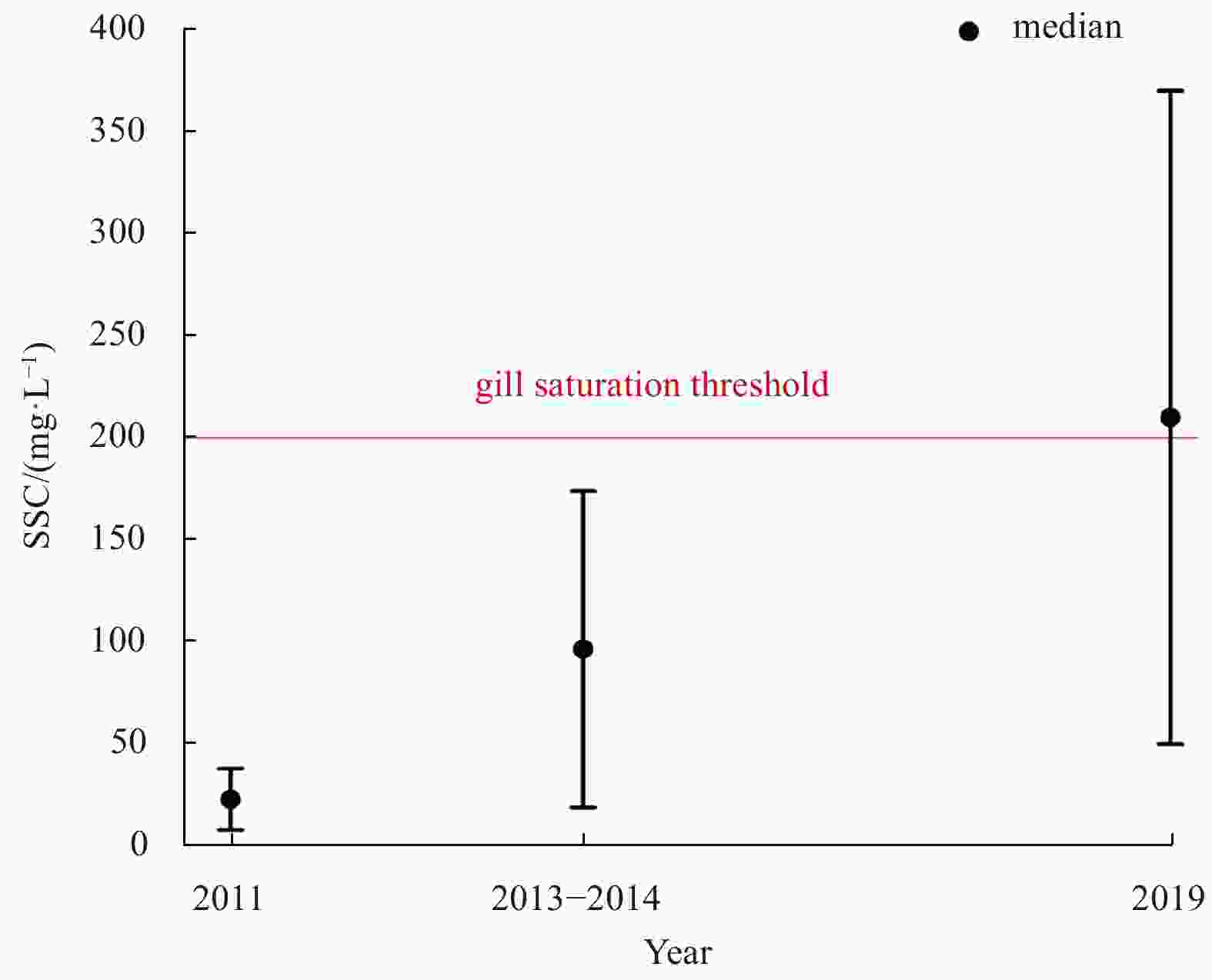Geomorphology and sediment dynamics of the Liyashan oyster reefs, Jiangsu Coast, China
-
Abstract: Oyster reefs and their spatial patterns are deemed to change the local hydrodynamic condition and exert profound impacts on the grain size, concentration and transportation of suspended sediments. Meanwhile, high suspended sediment concentration often results in excess mortality among oysters. Oyster reefs are rare and vital ecosystem in Liyashan national marine park, Jiangsu Coast, China. However, urgent conservation efforts should be made on account of the drastic reduction in reef areas. To investigate the sediment dynamics and the geomorphology, two tripod observation systems were deployed and UAV aerial surveys with elevation measurement using Real Time Kinematic (RTK) were also carried out. High mud content (60%) was found in the bed sediment at the reef ridge, causing much lower drag coefficient than other recorded values of living oyster reefs, indicating the death of oysters and the degradation of reefs in Liyashan. Ridgelines of the string reefs at 45° to the current direction and high suspended sediment concentration in the water body (50–370 mg/L) that exceeds the threshold (200 mg/L), which would affect nutrient uptake efficiency and further result in gill saturation, decrease of clearance rate and associated deposition, were probably crucial causes of the death of oysters. The findings are useful for restoring natural oyster reefs and designing artificial reefs for nature-based coastal defense.
-
Key words:
- oyster reefs /
- suspended sediment concentration /
- hydrodynamics /
- drag coefficient /
- spatial patterns
-
Figure 1. Maps of the study area. a. Location of the Liyanshan oyster reefs in the Jiangsu Coast, China. The yellow frame signifies the area for UAV photography while the red solid denotes the tidal gauge station. b. The target reef behind the shell bank. c. The deployment scheme of two tripod observation systems. The red solid square and triangle denote the Tripod A and Tripod B, respectively. The positive along-ridge and cross-ridge directions are also defined in c.
Figure 4. Spatial patterns of the oyster reefs in the northeastern Liyashan. The red frame is the area in Fig. 1c while the blue and yellow frames signify the areas of dense aggregation of fringe reefs and patch reefs (see Fig. 8), respectively; the black patches denote waters where lacks characteristic points for imagery reconstruction.
Figure 6. Velocities near the bed at both the reef crest (TA) and the reef front (TB) (Va, and Vc represent along-ridge and cross-ridge components respectively; straight lines are results of regression analysis and slopes of the black and grey lines denote the average directions of the flood and the ebb, respectively).
Figure 8. Spatial distribution of oyster reefs in the southwestern surveyed area (the mapped area corresponds to the yellow frame in Fig. 4 and yellow frames here denote positions of some patch reefs).
Figure 10. Ranges of suspended sediment concentration (SSC) in Liyashan in recent years. The black dot and the red line denote the median of the interval and the gill saturation threshold, respectively (Quan et al., 2012, 2016).
Table 1. Instrumental information and sampling scheme
Tripod Instrument Distance above seabed/m Sampling scheme Frequency/Hz Duration/s Interval/min TA ADV N5492 0.15 16 128 15 OBS 546 0.15 1 10 3 RBR 79692 0.60 1 10 3 RBR 200415 0.30 1 10 3 TB ADV N5371 0.15 16 128 15 ADV N5491 0.30 16 128 15 OBS 547 0.15 1 10 3 RBR 79836 0.60 1 10 3 RBR 200416 0.30 1 10 3 Note: Distance above seabed refers to distance from observation point of instruments to the substrate. TA: Tripod A; TB: Tripod B. Table 2. Drag coefficients of oyster reefs
Location Drag coefficient (Cd) Reference Living reef Degraded reef Mosquito Lagoon, Florida, USA 0.031 0.016 Kitsikoudis et al. (2020) Winyah Bay, South Carolina, USA 0.032 − Styles (2015) Chesapeake Bay, Virginia, USA 0.019 0.009 Whitman and Reidenbach (2012) 0.021 − Reidenbach et al. (2013) Wreck Shoal, James River, Virginia, USA 0.010 3 0.003 7 DeAlteris (1989) Liyashan Oyster Reef, Haimen, China − 0.004 3 this study Note: − represents no data. Table 3. Ranges of SSC in oyster reef habitats
Location Year SSC/(mg·L−1) Reference Chesapeake Bay, Virginia, USA 2012 39–65 Whitman and Reidenbach (2012) 2013 48 (mean) Reidenbach et al. (2013) Great Bay Estuary, New Jersey, USA 2017 25–32 Zappas and Moskalski (2018) Apalachicola Bay, Florida, USA 2010 14.5–79.1 Huang et al. (2016) Liyashan Oyster Reef, Haimen, China 2011 8–38 Quan et al. (2012) 2013–2014 19–136 Quan et al. (2016) 2019 50–370 this study -
[1] Baine M. 2001. Artificial reefs: a review of their design, application, management and performance. Ocean & Coastal Management, 44(3−4): 241–259 [2] Barillé L, Lerouxel A, Dutertre M, el al. 2011. Growth of the Pacific oyster (Crassostrea gigas) in a high-turbidity environment: comparison of model simulations based on scope for growth and dynamic energy budgets. Journal of Sea Research, 66(4): 392–402. doi: 10.1016/j.seares.2011.07.004 [3] Barillé L, Prou J, Héral M, et al. 1997. Effects of high natural seston concentrations on the feeding, selection, and absorption of the oyster Crassostrea gigas (Thunberg). Journal of Experimental Marine Biology and Ecology, 212(2): 149–172. doi: 10.1016/S0022-0981(96)02756-6 [4] Beck M W, Brumbaugh R D, Airoldi L, et al. 2011. Oyster reefs at risk and recommendations for conservation, restoration, and management. Bioscience, 61(2): 107–116. doi: 10.1525/bio.2011.61.2.5 [5] Bhatia K, Vecchi G, Murakami H, et al. 2018. Projected response of tropical cyclone intensity and intensification in a global climate model. Journal of Climate, 31(20): 8281–8303. doi: 10.1175/JCLI-D-17-0898.1 [6] Blott S J, Pye K. 2001. GRADISTAT: a grain size distribution and statistics package for the analysis of unconsolidated sediments. Earth Surface Processes and Landforms, 26(11): 1237–1248. doi: 10.1002/esp.261 [7] Bockelmann A C, Bakker J P, Neuhaus R, et al. 2002. The relation between vegetation zonation, elevation and inundation frequency in a Wadden Sea salt marsh. Aquatic Botany, 73(3): 211–221. doi: 10.1016/S0304-3770(02)00022-0 [8] Bricker J D, Monismith S G. 2007. Spectral wave-turbulence decomposition. Journal of Atmospheric and Oceanic Technology, 24(8): 1479–1487. doi: 10.1175/JTECH2066.1 [9] Brumbaugh R D, Coen L D. 2009. Contemporary approaches for small-scale oyster reef restoration to address substrate Versus recruitment limitation: a review and comments relevant for the Olympia oyster, Ostrea lurida carpenter 1864. Journal of Shellfish Research, 28(1): 147–161. doi: 10.2983/035.028.0105 [10] Cacchione D A, Sternberg R W, Ogston A S. 2006. Bottom instrumented tripods: history, applications, and impacts. Continental Shelf Research, 26(17−18): 2319–2334. doi: 10.1016/j.csr.2006.07.027 [11] Carriker M R. 1986. Influence of suspended particles on biology of oyster larvae in estuaries. American Malacological Bulletin, 3: 41–49 [12] Castellazzi G, D'Altri A M, Bitelli G, et al. 2015. From laser scanning to finite element analysis of complex buildings by using a semi-automatic procedure. Sensors, 15(8): 18360–18380. doi: 10.3390/s150818360 [13] Chambers L G, Gaspar S A, Pilato C J, et al. 2018. How well do restored intertidal oyster reefs support key biogeochemical properties in a coastal lagoon?. Estuaries and Coasts, 41(3): 784–799. doi: 10.1007/s12237-017-0311-5 [14] Chen Yunzhen, Gao Shu. 2010. A geometric model for oyster reef evolution off southern Jiangsu coast, China. Oceanologia et Limnologia Sinica (in Chinese), 41(1): 1–11 [15] Chiabrando F, Donadio E, Rinaudo F. 2015. SfM for orthophoto to generation: a winning approach for cultural heritage knowledge. In: Proceedings of the International Archives of Photogrammetry, Remote Sensing and Spatial Information Sciences. Taipei: ISPRS, 91–98 [16] Coen L D, Luckenbach M W. 2000. Developing success criteria and goals for evaluating oyster reef restoration: ecological function or resource exploitation?. Ecological Engineering, 15(3−4): 323–343. doi: 10.1016/S0925-8574(00)00084-7 [17] Colden A M, Fall K A, Cartwright G M, et al. 2016. Sediment suspension and deposition across restored oyster reefs of varying orientation to flow: implications for restoration. Estuaries and Coasts, 39(5): 1435–1448. doi: 10.1007/s12237-016-0096-y [18] Colden A M, Lipcius R N. 2015. Lethal and sublethal effects of sediment burial on the eastern oyster Crassostrea virginica. Marine Ecology Progress Series, 527: 105–117. doi: 10.3354/meps11244 [19] Constantinescu G, Miyawaki S, Liao Qian. 2012. Flow and turbulence structure past a cluster of freshwater mussels. Journal of Hydraulic Engineering, 139(4): 347–358 [20] Couce L M C, Guerreiro M J R, Formoso J A F, et al. 2019. Green artificial reef PROARR: repopulation of coastal ecosystems and waste recycler of the maritime industries. In: Proceedings of the 25th Pan-American Conference of Naval Engineering. Cham, Switzerland: Springer, 363–373 [21] Cressman K A, Posey M H, Mallin M A, et al. 2003. Effects of oyster reefs on water quality in a tidal creek estuary. Journal of Shellfish Research, 22(3): 753–762 [22] Cruz-Rodríguez L A, Chu F L E. 2002. Heat-shock protein (HSP70) response in the eastern oyster, Crassostrea virginica, exposed to PAHs sorbed to suspended artificial clay particles and to suspended field contaminated sediments. Aquatic Toxicology, 60(3−4): 157–168. doi: 10.1016/S0166-445X(02)00008-5 [23] Cunliffe A M, Tanski G, Radosavljevic B, et al. 2019. Rapid retreat of permafrost coastline observed with aerial drone photogrammetry. The Cryosphere, 13(5): 1513–1528. doi: 10.5194/tc-13-1513-2019 [24] Dame R F. 2011. Ecology of Marine Bivalves: An Ecosystem Approach. 2nd ed. Boca Raton, FL, USA: CRC Press [25] DeAlteris J T. 1989. The role of bottom current and estuarine geomorphology on the sedimentation processes and productivity of wreck shoal, an oyster reef of the James River, Virginia. In: Neilson B J, Kuo A, Brubaker J, eds. Estuarine Circulation. Clifton, NJ, USA: Humana Press, 279–307 [26] Dietrich J T. 2016. Riverscape mapping with helicopter-based Structure-from-Motion photogrammetry. Geomorphology, 252: 144–157. doi: 10.1016/j.geomorph.2015.05.008 [27] Downing J. 2006. Twenty-five years with OBS sensors: the good, the bad, and the ugly. Continental Shelf Research, 26(17−18): 2299–2318. doi: 10.1016/j.csr.2006.07.018 [28] Dunnington E A Jr. 1968. Survival time of oysters after burial at various temperatures. Proceedings of the National Shellfisheries Association, 58: 101–103 [29] Dutertre M, Beninger P G, Barillé L, et al. 2009. Temperature and seston quantity and quality effects on field reproduction of farmed oysters, Crassostrea gigas, in Bourgneuf Bay, France. Aquatic Living Resources, 22(3): 319–329. doi: 10.1051/alr/2009042 [30] Eertman R H M, Groenink C L F M G, Sandee B, et al. 1995. Response of the blue mussel Mytilus edulis L. following exposure to PAHs or contaminated sediment. Marine Environmental Research, 39(1−4): 169–173. doi: 10.1016/0141-1136(94)00022-H [31] Gernez P, Barillé L, Lerouxel A, et al. 2014. Remote sensing of suspended particulate matter in turbid oyster-farming ecosystems. Journal of Geophysical Research: Oceans, 119(10): 7277–7294. doi: 10.1002/2014JC010055 [32] Goring D G, Nikora V I. 2002. Despiking acoustic Doppler velocimeter data. Journal of hydraulic engineering, 128(1): 117–126. doi: 10.1061/(ASCE)0733-9429(2002)128:1(117) [33] Grave C. 1904. Investigations for the promotion of the oyster industry of North Carolina (Vol. 556). University of Michigan Library, 67−101 [34] Huang Wenrui, Hagen S C, Wang Dingbao, et al. 2016. Suspended sediment projections in Apalachicola Bay in response to altered river flow and sediment loads under climate change and sea level rise. Earth’s Future, 4(10): 428–439. doi: 10.1002/2016EF000384 [35] Jackson J B C, Kirby M X, Berger W H, et al. 2001. Historical overfishing and the recent collapse of coastal ecosystems. Science, 293(5530): 629–637. doi: 10.1126/science.1059199 [36] Javernick L, Brasington J, Caruso B. 2014. Modeling the topography of shallow braided rivers using Structure-from-Motion photogrammetry. Geomorphology, 213: 166–182. doi: 10.1016/j.geomorph.2014.01.006 [37] Kennedy V S, Sanford L P. 1999. The morphology and physical oceanography of unexploited oyster reefs in North America. In: Luckenbach M W, Mann R, Wesson J A, eds. Oyster Reef Habitat Restoration: A Synopsis and Synthesis of Approaches. Gloucester Point, VA, USA: VIMS Press, 25–46 [38] Kim S C, Friedrichs C T, Maa J P Y, et al. 2000. Estimating bottom stress in tidal boundary layer from acoustic Doppler velocimeter data. Journal of Hydraulic Engineering, 126(6): 399–406. doi: 10.1061/(ASCE)0733-9429(2000)126:6(399) [39] Kineke G C, Sternberg R W. 1992. Measurements of high concentration suspended sediments using the optical backscatterance sensor. Marine Geology, 108(3−4): 253–258. doi: 10.1016/0025-3227(92)90199-R [40] Kitsikoudis V, Kibler K M, Walters L J. 2020. In-situ measurements of turbulent flow over intertidal natural and degraded oyster reefs in an estuarine lagoon. Ecological Engineering, 143: 105688. doi: 10.1016/j.ecoleng.2019.105688 [41] Lenihan H S. 1999. Physical-biological coupling on oyster reefs: how habitat structure influences individual performance. Ecological Monographs, 69(3): 251–275 [42] Lenihan H S, Peterson C H. 1998. How habitat degradation through fishery disturbance enhances impacts of hypoxia on oyster reefs. Ecological Applications, 8(1): 128–140. doi: 10.1890/1051-0761(1998)008[0128:HHDTFD]2.0.CO;2 [43] Li Yun, Shen Anglu. 2012. Damage and recovery in the Kumamoto oyster Crassostrea sikamea stressed by suspended solids. Journal of Fishery Sciences of China (in Chinese), 19(1): 138–144 [44] Liu Huan, Wu Chaoyu. 2011. Turbulence measurement in estuary and data post-processing. The Ocean Engineering (in Chinese), 29(2): 122–128, 134 [45] Lowe D G. 2004. Distinctive image features from scale-invariant keypoints. International Journal of Computer Vision, 60(2): 91–110. doi: 10.1023/B:VISI.0000029664.99615.94 [46] Lu Yuanzheng, Wu Jiaxue, Liu Huan. 2012. An integrated post-processing technique for turbulent flows in estuarine bottom boundary layer. Haiyang Xuebao (in Chinese), 34(5): 39–49 [47] MacVean L J, Lacy J R. 2014. Interactions between waves, sediment, and turbulence on a shallow estuarine mudflat. Journal of Geophysical Research: Oceans, 119(3): 1534–1553. doi: 10.1002/2013JC009477 [48] Morris R L, Bilkovic D M, Boswell M K, et al. 2019. The application of oyster reefs in shoreline protection: are we over-engineering for an ecosystem engineer?. Journal of Applied Ecology, 56(7): 1703–1711. doi: 10.1111/1365-2664.13390 [49] Mudd S M, Howell S M, Morris J T. 2009. Impact of dynamic feedbacks between sedimentation, sea-level rise, and biomass production on near-surface marsh stratigraphy and carbon accumulation. Estuarine, Coastal and Shelf Science, 82(3): 377–389. doi: 10.1016/j.ecss.2009.01.028 [50] Nepf H M. 2012. Flow and transport in regions with aquatic vegetation. Annual Review of Fluid Mechanics, 44: 123–142. doi: 10.1146/annurev-fluid-120710-101048 [51] O’Riordan C A, Monismith S G, Koseff J R. 1995. The effect of bivalve excurrent jet dynamics on mass transfer in a benthic boundary layer. Limnology and Oceanography, 40(2): 330–344. doi: 10.4319/lo.1995.40.2.0330 [52] Piazza B P, Banks P D, La Peyre M K. 2005. The potential for created oyster shell reefs as a sustainable shoreline protection strategy in Louisiana. Restoration Ecology, 13(3): 499–506. doi: 10.1111/j.1526-100X.2005.00062.x [53] Quan Weimin, An Chuangguang, Ma Chunyan, et al. 2012. Biodiversity and community structure of benthic macroinvertebrates on the Xiaomiaohong oyster reef in Jiangsu Province, China. Oceanologia et Limnologia Sinica (in Chinese), 43(5): 992–1000 [54] Quan Weimin, Zhou Weifeng, Ma Chunyan, et al. 2016. Ecological status of a natural intertidal oyster reef in Haimen County, Jiangsu Province. Acta Ecologica Sinica (in Chinese), 36(23): 7749–7757 [55] Quan Weimin, Zhu Jiangxing, Ni Yong, et al. 2009. Faunal utilization of constructed intertidal oyster (Crassostrea rivularis) reef in the Yangtze River estuary, China. Ecological Engineering, 35(10): 1466–1475. doi: 10.1016/j.ecoleng.2009.06.001 [56] Reidenbach M A, Berg P, Hume A, et al. 2013. Hydrodynamics of intertidal oyster reefs: the influence of boundary layer flow processes on sediment and oxygen exchange. Limnology and Oceanography: Fluids and Environments, 3(1): 225–239. doi: 10.1215/21573689-2395266 [57] Ren M E. 1986. Comprehensive Investigation of the Coastal Zone and Tidal Land Resources of Jiangsu Province (in Chinese). Beijing: China Ocean Press, 184–192 [58] Rothschild B J, Ault J S, Goulletquer P, et al. 1994. Decline of the Chesapeake Bay oyster population: a century of habitat destruction and overfishing. Marine Ecology Progress Series, 111: 29–39. doi: 10.3354/meps111029 [59] Scyphers S B, Powers S P, Heck Jr K L, et al. 2011. Oyster reefs as natural breakwaters mitigate shoreline loss and facilitate fisheries. PLoS ONE, 6(8): e22396. doi: 10.1371/journal.pone.0022396 [60] Shields Jr F D, Coulton K G, Nepf H. 2017. Representation of vegetation in two-dimensional hydrodynamic models. Journal of Hydraulic Engineering, 143(8): 02517002. doi: 10.1061/(ASCE)HY.1943-7900.0001320 [61] Slott J M, Murray A B, Ashton A D, et al. 2006. Coastline responses to changing storm patterns. Geophysical Research Letters, 33(18): L18404 [62] Smith G F, Roach E B, Bruce D G. 2003. The location, composition, and origin of oyster bars in mesohaline Chesapeake Bay. Estuarine, Coastal and Shelf Science, 56(2): 391–409. doi: 10.1016/S0272-7714(02)00191-9 [63] Soulsby R L. 1997. Dynamics of Marine Sands: A Manual for Practical Applications. London, UK: Thomas Telford [64] Storti F, Balsamo F. 2010. Particle size distributions by laser diffraction: sensitivity of granular matter strength to analytical operating procedures. Solid Earth, 1(1): 25–48. doi: 10.5194/se-1-25-2010 [65] Styles R. 2015. Flow and turbulence over an oyster reef. Journal of Coastal Research, 31(4): 978–985 [66] Suedel B C, Clarke J U, Wilkens J, et al. 2015. The effects of a simulated suspended sediment plume on eastern oyster (Crassostrea virginica) survival, growth, and condition. Estuaries and Coasts, 38(2): 578–589. doi: 10.1007/s12237-014-9835-0 [67] Trowbridge J H, Lentz S J. 2018. The bottom boundary layer. Annual Review of Marine Science, 10: 397–420. doi: 10.1146/annurev-marine-121916-063351 [68] Turner I L, Harley M D, Drummond C D. 2016. UAVs for coastal surveying. Coastal Engineering, 114: 19–24. doi: 10.1016/j.coastaleng.2016.03.011 [69] van Duren L A, Herman P M J, Sandee A J J, et al. 2006. Effects of mussel filtering activity on boundary layer structure. Journal of Sea Research, 55(1): 3–14. doi: 10.1016/j.seares.2005.08.001 [70] van Rijn L C. 2007. Unified view of sediment transport by currents and waves. I: initiation of motion, bed roughness, and bed-load transport. Journal of Hydraulic Engineering, 133(6): 649–667. doi: 10.1061/(ASCE)0733-9429(2007)133:6(649) [71] Vousdoukas M I, Mentaschi L, Voukouvalas E, et al. 2018. Climatic and socioeconomic controls of future coastal flood risk in Europe. Nature Climate Change, 8(9): 776–780. doi: 10.1038/s41558-018-0260-4 [72] Wang Yunwei, Yu Qian, Jiao Jian, et al. 2016. Coupling bedform roughness and sediment grain-size sorting in modelling of tidal inlet incision. Marine Geology, 381: 128–141. doi: 10.1016/j.margeo.2016.09.004 [73] Whitman E R, Reidenbach M A. 2012. Benthic flow environments affect recruitment of Crassostrea virginica larvae to an intertidal oyster reef. Marine Ecology Progress Series, 463: 177–191. doi: 10.3354/meps09882 [74] Wiberg P L, Rubin D M. 1989. Bed roughness produced by saltating sediment. Journal of Geophysical Research: Oceans, 94(C4): 5011–5016. doi: 10.1029/JC094iC04p05011 [75] Wilber D H, Clarke D G. 2001. Biological effects of suspended sediments: a review of suspended sediment impacts on fish and shellfish with relation to dredging activities in estuaries. North American Journal of Fisheries Management, 21(4): 855–875. doi: 10.1577/1548-8675(2001)021<0855:BEOSSA>2.0.CO;2 [76] Wildish D J, Kristmanson D D. 1984. Importance to mussels of the benthic boundary layer. Canadian Journal of Fisheries and Aquatic Sciences, 41(11): 1618–1625. doi: 10.1139/f84-200 [77] Xiong Jilian, Wang Xiaohua, Wang Yaping, et al. 2018. Reprint of Mechanisms of maintaining high suspended sediment concentration over tide-dominated offshore shoals in the southern Yellow Sea. Estuarine, Coastal and Shelf Science, 206: 2–13. doi: 10.1016/j.ecss.2018.03.019 [78] Xu J P, Wright L D. 1995. Tests of bed roughness models using field data from the Middle Atlantic Bight. Continental Shelf Research, 15(11−12): 1409–1434. doi: 10.1016/0278-4343(94)00083-Y [79] Zappas J, Moskalski S. 2018. Suspended sediment concentration and sediment flux over a restored oyster reef. In: Proceedings of the Northeastern Section-53rd Annual Meeting-2018. Galloway, Scotland: GSA [80] Zhang Renshun. 2004. The geomorphology-sedimentology character of oyster reef in Xiaomiaohong tidal channel, Jiangsu Province. Oceanologia et Limnologia Sinica (in Chinese), 35(1): 1–7 [81] Zhang Renshun, Wang Yanhong, Zhang Zhenglong, et al. 2007. Geomorphology and evolution of the Xiaomiaohong Oyster reef off Jiangsu coast, China. Oceanologia et Limnologia Sinica (in Chinese), 38(3): 259–265 [82] Zhang Chi, Zheng Jinhai, Dong Xiaowei, et al. 2013. Morphodynamic response of Xiaomiaohong tidal channel to a coastal reclamation project in Jiangsu Coast, China. Journal of Coastal Research, 1(65): 630–635 -




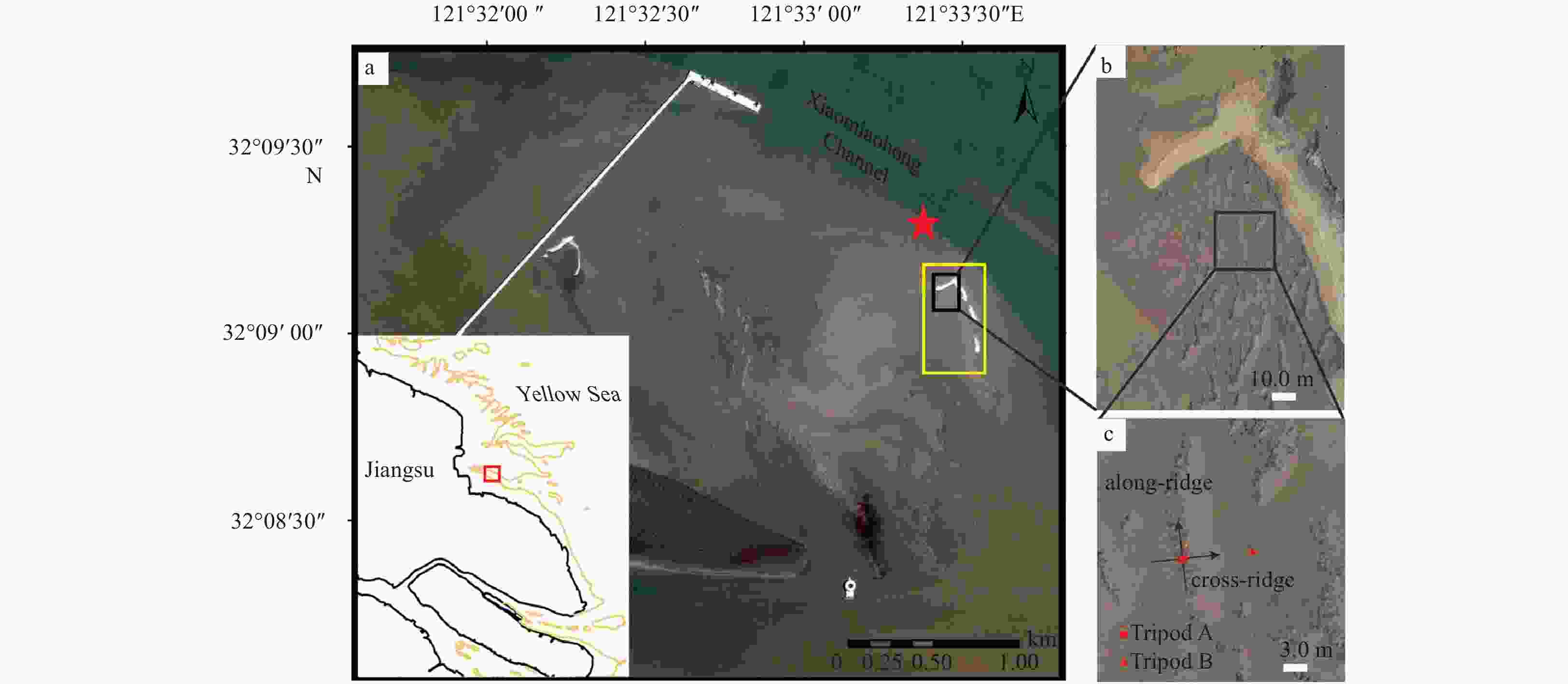
 下载:
下载:
